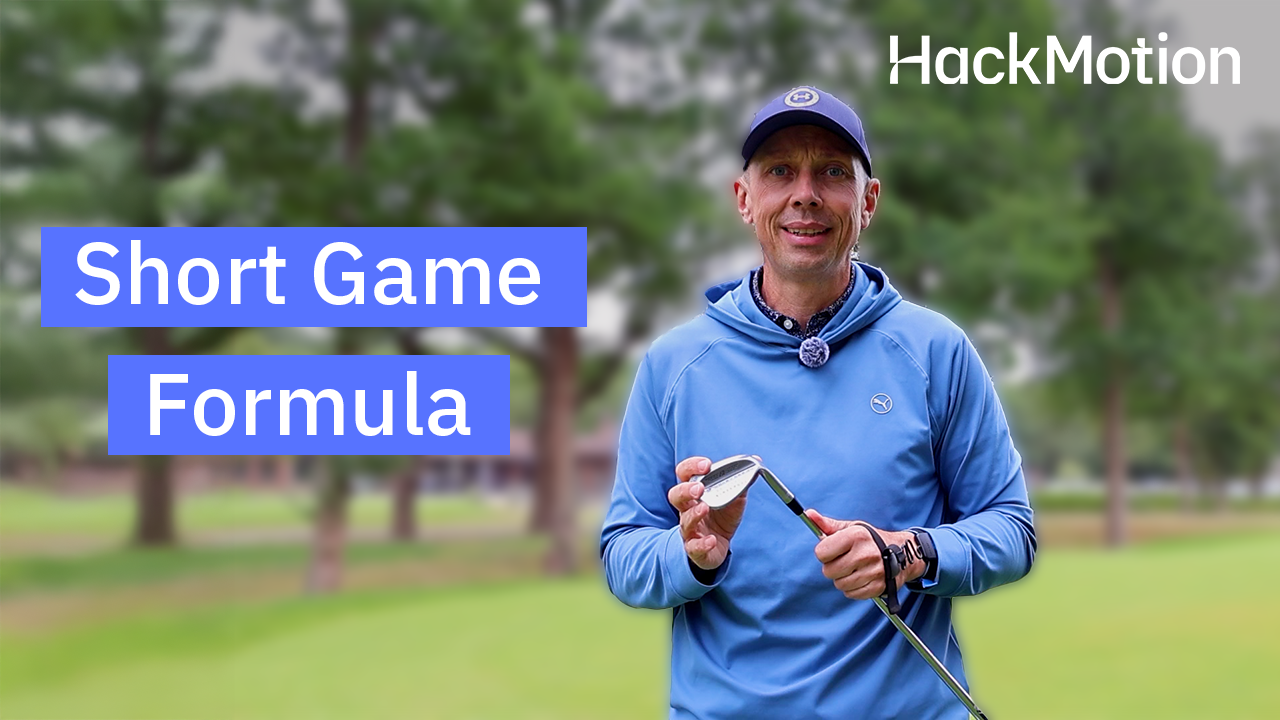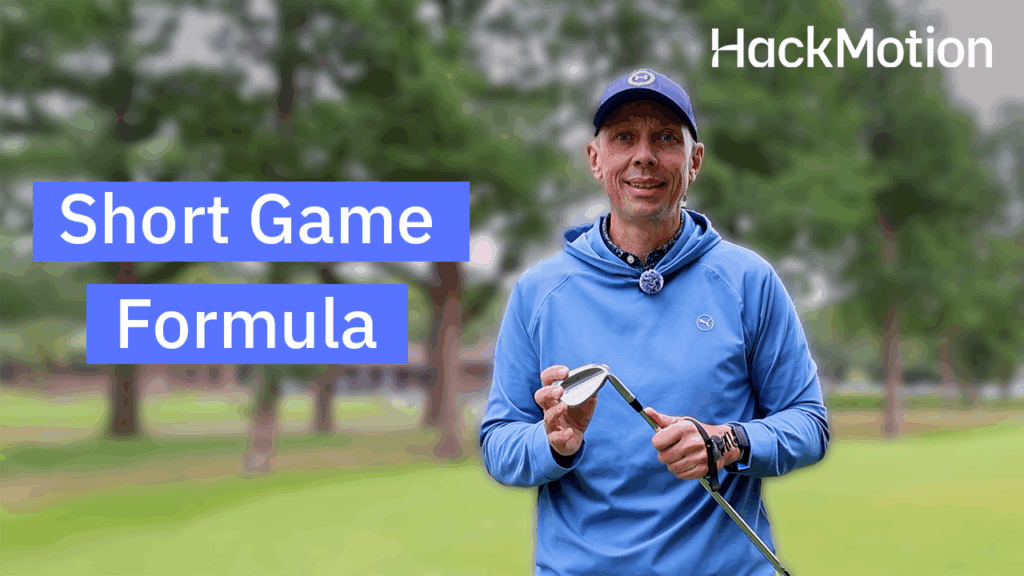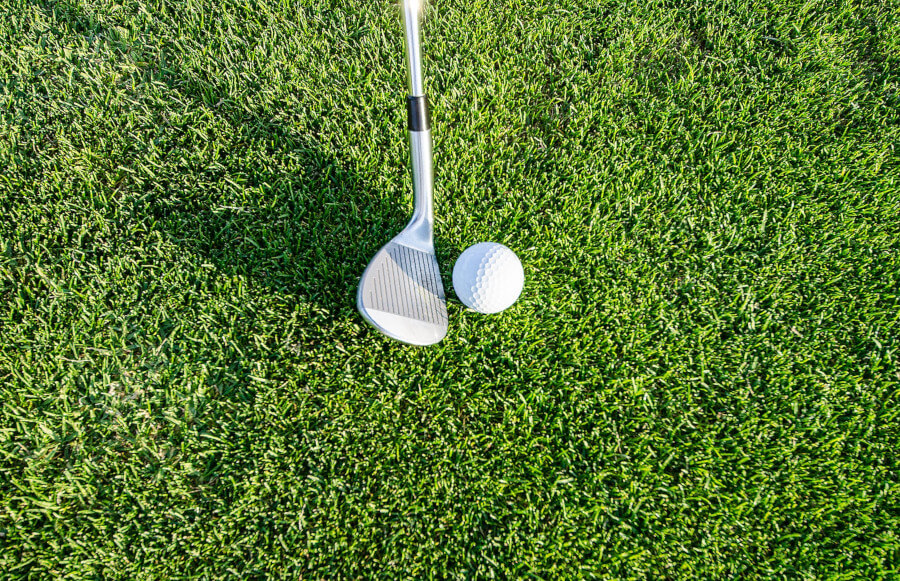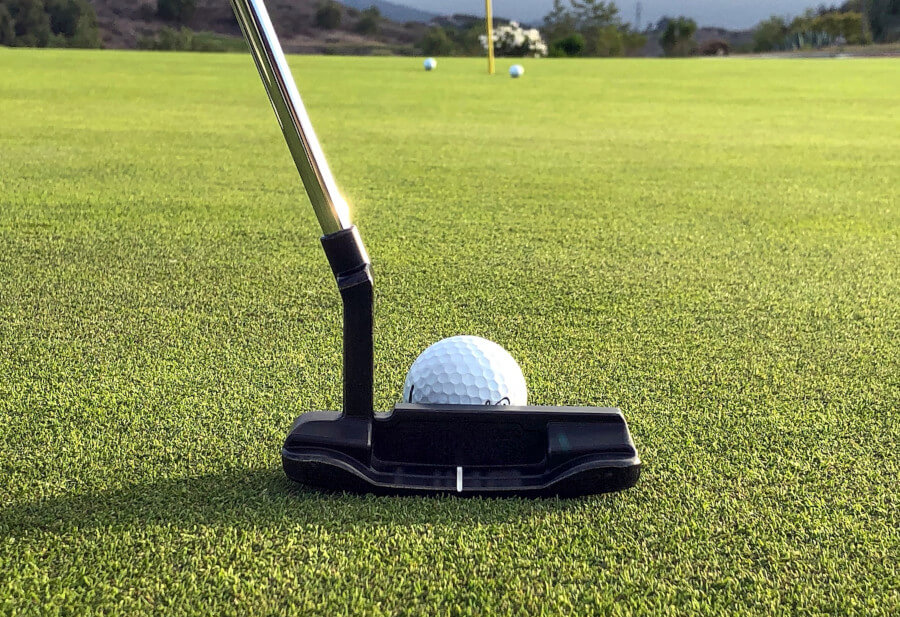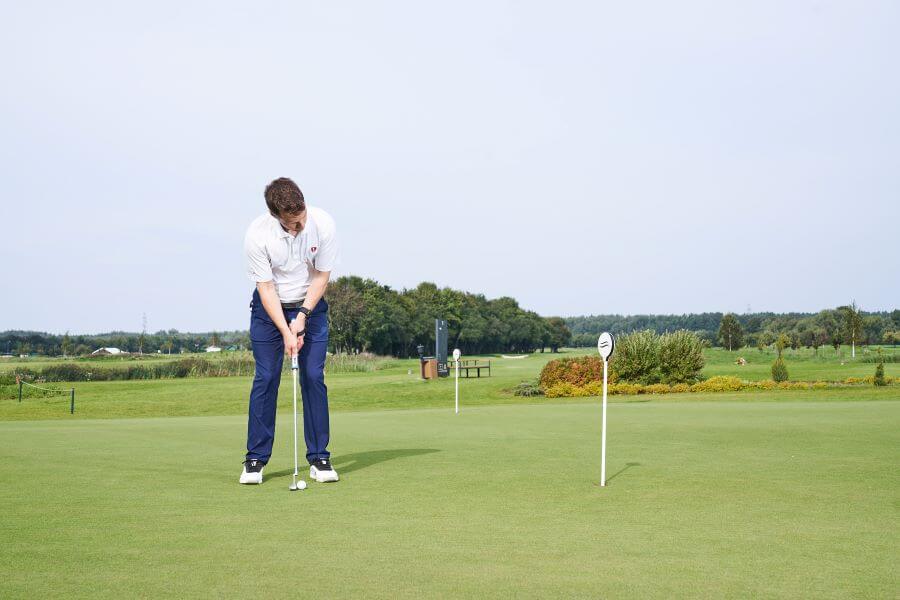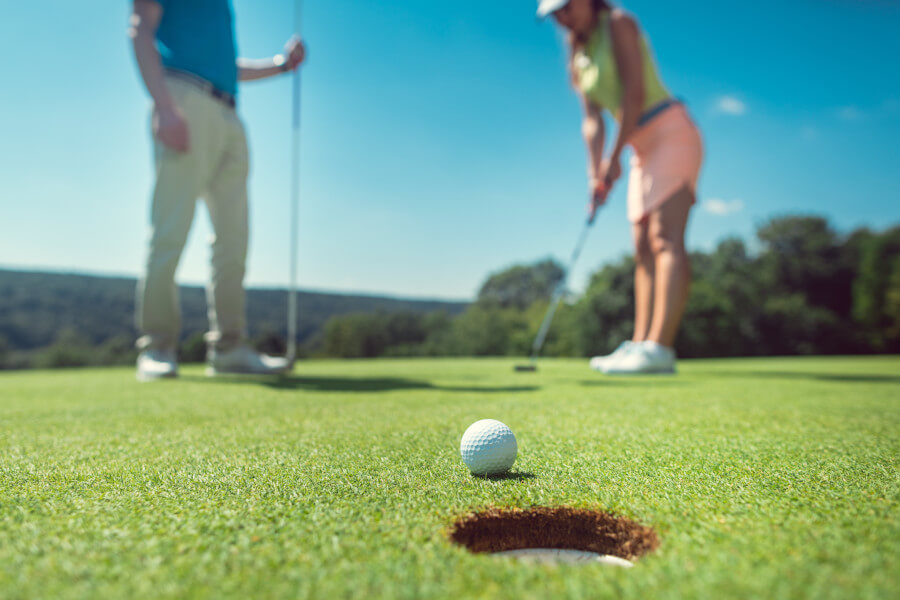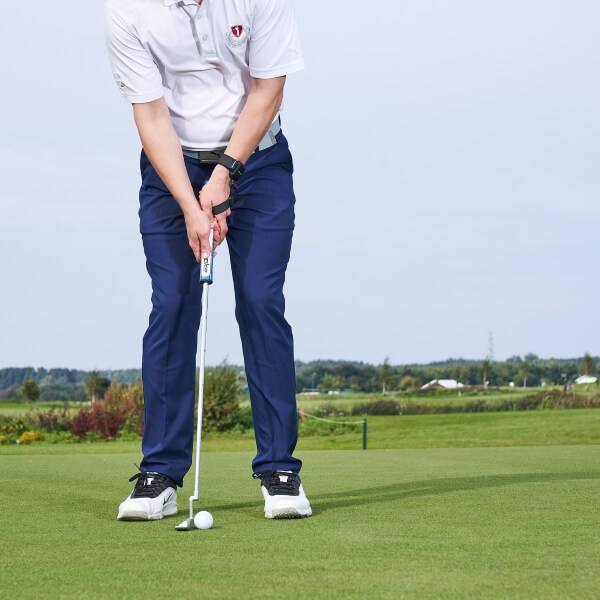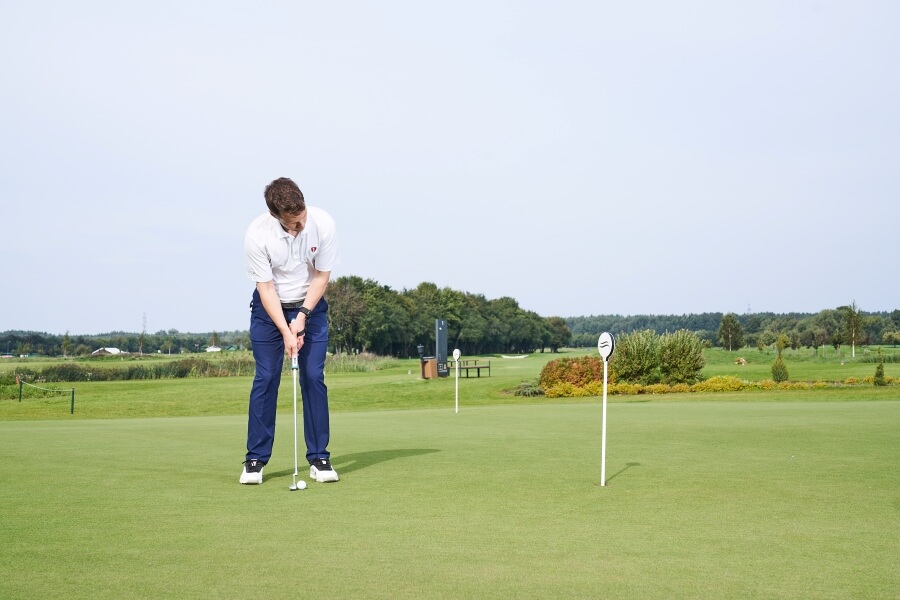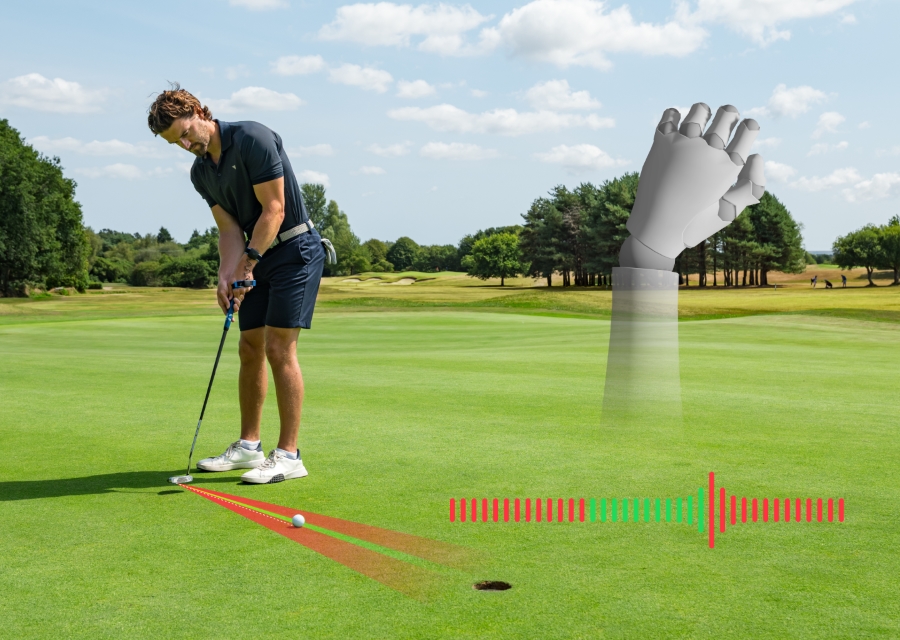How to Hit Your Wedges Better: 12 Actionable Tips & Drills That Work
Amateur golfers miss greens, it comes with the territory. That’s why having a strong wedge game is so important.
From 100 yards and in, your scoring potential is determined by how well you can control trajectory, spin, and distance with your wedges.
If you can hit your wedges better, you’ll not only save strokes around the green but also give yourself more tap-in putts instead of tricky two-putts.
The tips below cover everything from weight distribution to wrist action, helping you build consistency and confidence in the shots that matter most.
With tools like HackMotion to track and refine your wrist mechanics, you can finally take the guesswork out of your wedge play and start sticking it closer.
How to Hit Wedges (Key Takeaways)
If you don’t have time to read through all of our tips on how to hit wedges better, here are a few that you can walk away with right now. Bookmark this so you can come back and try these tips the next time you head to the driving range.
- Keep your weight positioned more on your lead foot; you’ll get more accuracy and control.
- Learn the wrist position for pitches and chips. It’s not exactly the same, and you’ll need to understand it if you want consistency.
- Maintain a forward press with your hands through impact to create that proper angle of attack and improved acceleration through the ball.
- Remember visualization in the wedge game; it’s just as important as it is with any other club in the bag.
Contents
- 12 Wedge Tips Every Golfer Should Know
- 1. Get Your Weight On the Lead Foot
- 2. Narrow Down the Ball Position
- 3. Wedge Bounce is Your Friend
- 4. Accelerate Through Impact
- 5. Work On Wrist Extension and Flexion
- 6. Grip Down on the Club for Control
- 7. You Can’t Forget Tempo with Wedges
- 8. Practice Different Length Swings
- 9. Choose the Right Loft for The Job
- 10. Visualize the Shot
- 11. Practice from Different Lies
- 12. Maintain Lower Body Stability
- Drills to Help Hit Your Wedges Better
- Final Thoughts
12 Wedge Tips Every Golfer Should Know
1. Get Your Weight On the Lead Foot
To hit your wedges more effectively, position your weight more on your lead foot. This slight change of weight will ensure you strike the ball as the club is traveling down.
This applies to full-swing shots with the wedge and greenside shots.
Most golfers aim for a 70/30 weight distribution, but you can experiment with different amounts that work for you.
2. Narrow Down the Ball Position
Golfers love to say things like “put the ball in the back for the wedges”.
However, this is not always the smartest thing to do.
When the ball is positioned too far back, the strike is typically not as clean; some players also hit these shots out to the right.
Placing the ball too far forward can result in thin and fat shots. It’s best to take a narrower stance and leave the ball mostly in the middle of your feet.
3. Wedge Bounce is Your Friend
Wedge bounce helps ensure the wedge slides through the golf ball and does not dig too deeply into the turf. You’ll be able to make contact with the ball without feeling like you are going to chunk it.
In addition, wedge bounce helps you glide through bunker shots with each. This is not to say that more wedge bounce is best.
In fact, having a variety of bounce options throughout your wedge set is often the smartest option.
Here’s a look at some wedge bounce options and how to customize them based on course conditions.
| Lie/Turf Condition | Recommended Bounce | Description |
|---|---|---|
| Firm Turf / Tight Lies | Low Bounce (4°-6°) | Ideal for golfers who play on firm, dry turf with minimal grass, promoting cleaner contact. |
| Normal Turf | Mid Bounce (7°-10°) | Suitable for most turf conditions, offering versatility and forgiveness for various shots. |
| Soft Turf / Fluffy Lies | High Bounce (10°-14°) | Best for soft, wet conditions or fluffy lies, preventing the club from digging too much. |
| Bunker Play | High Bounce (10°-14°) | Helps the club glide through the sand, making it easier to escape bunkers. |
4. Accelerate Through Impact
The clubhead must accelerate through impact for wedge shots to be clean and controlled. Acceleration produces a square clubface, better spin, and more consistent contact.
Many golfers make the mistake of decelerating, trying to “guide” the ball. Instead, trust your setup, swing length, and wrist action to do the work.
A simple thought is one-third backswing, two-thirds follow-through, this keeps the motion smooth and ensures you accelerate through the strike.
5. Work On Wrist Extension and Flexion
The wrists work differently in chipping and pitching.
For a great chip shot, the lead wrist should be flexed through impact with a good amount of shaft lean. This creates a stable, slightly lower, and straight ball flight where the ball can roll out to the hole.
You’ll notice more of a flat wrist or even slightly extended lead wrist position through impact for pitch shots. This helps add additional loft through the impact zone.
HackMotion can help you narrow down the exact wrist positions for chipping and pitching. You can compare your wrist action with that of the professionals.

6. Grip Down on the Club for Control
If you are having trouble controlling the distance you get with your wedge shots, you may want to grip down on the club.
Gripping down can give you extra control and make you feel as though you can stop your golf ball where it needs to stop on the greens.
Standing too far from the ball and gripping at the top of the club often causes issues with distance control.
7. You Can’t Forget Tempo with Wedges
Tempo with wedges is just as important as it is with a full swing iron shot to the green or a driver off the tee box.
Ensure your tempo is smooth as you return to the ball and throughout the swing.
Not only is it easier to ensure a consistent strike, but you will also notice better distance control and accuracy in your shots.
8. Practice Different Length Swings
Do you have difficulty dialing in shots that are not full swings? Maybe it’s a 50, 60, or 70-yard shot, and you just can’t get the yardage down.
One of the best ways to deal with this is to work on different-length swings. Take out each of the wedges in your bag and learn to hit a full, ¾, half, and quarter swing shot with each.
Record these distances so you have a general idea of how far they go.
Now, you can use these different numbers the next time you are on the course without having to worry about those “in between” or awkward yardages.
9. Choose the Right Loft for The Job
Stop using the 56-degree wedge for all of your short game shots. It’s not built to handle everything.
Golfers who are more particular about which wedge to use and when have a much better wedge game. Golf wedges with higher bounce and more loft are great for soft lies, sand, and rough.
Wedges with less bounce and less loft are better from clean or hard lies on the course. If you keep trying to use the wrong loft and the wrong wedge for the job, you’ll have poor results.
10. Visualize the Shot
To hit your wedges better, start visualizing the shots you are trying to hit. Picture where you are going to have the ball land, how it will continue to roll towards the target, and even how you expect the putt to break.
Proper visualization helps you make the correct movements in your swing. The mind is a powerful thing.
Try adding visualization to your pre-shot routine when hitting wedge shots. Before you even set up to hit, make sure you visualize exactly how this shot will play.
11. Practice from Different Lies
Most amateur golfers put golf balls down around the green in a perfect position and start practicing their chip shots.
How often during your round is your golf ball left in a perfect position? Probably not too often!
Practice from a variety of lies, including:
- Sand
- Slopes
- Thick rough
- Short grass
- Plugged lies
12. Maintain Lower Body Stability
The lower body is active when hitting wedges. There is a slight turn, and this turn and stability in the lower legs will help ensure the club strikes the ground and the ball goes up in the air.
The mistake many wedge players make is making too big of a turn or not turning with the lower body. When you do this, the strike has a lot of inconsistency.
Hitting some shots while standing on just the lead leg can help you get this feeling and determine how much movement is necessary.
Drills to Help Hit Your Wedges Better
Here are a few additional drills to help you hit your wedges better. Practicing with the wedges can be fun because there is some versatility and variety here.
Forearm Connection Ball Drill
Holding a ball (or towel) between your forearms keeps the elbows the same distance apart and syncs arm swing with body turn. Expect more centered strikes and cleaner turf interaction.
Forearm Connection Ball Drill – Step by Step:
- Place a small ball/towel between your forearms and take your chipping setup.
- Make short chips while lightly squeezing the object so it stays in place.
- Let the torso start the motion; keep wrists quiet and elbows connected.
- Aim to brush the turf; avoid digging or flipping.
- Remove the ball and retain the same connected feel on normal chips.
Plane Chipping Drill (Water-Bottle Gate)
Keeps your chip takeaway and through-swing on plane so you stop dragging the club too far inside (thin/fat city) or chopping outside.
Perfect indoors with foam/airflow balls—tighten the “gate” as you improve.
- Video Timestamp: 0:21
Water-Bottle Gate Drill – Step by Step:
- Place 4 water bottles to form a runway: two just outside the ball line (toe/heel), two a foot ahead on the target line.
- Set a ball (or foam ball) in the middle; take your normal chipping setup.
- Make small chips back and through, keeping the clubhead inside the gate—don’t clip any bottles.
- Start with the bottles wider for confidence; narrow the runway as you get cleaner.
- Focus on a slight torso turn both ways (no all-arms hit).
- Goal cues: brush the carpet/turf in the same spot; face stays quiet (no roll inside early).
- Optional: wear HackMotion and check that your lead wrist stays flat-to-slightly extended in the takeaway (not early flexion).
Cross-Handed Chipping Drill
If you struggle with flipping wrists or inconsistent contact, try switching to a cross-handed grip.
This method, used by pros like Matt Fitzpatrick, stabilizes the lead wrist and clubface, helping you make cleaner, repeatable strikes.
Cross-Handed Chipping Dril – Step by Step:
- Switch your grip: place your trail hand on top and your lead hand below (cross-handed).
- At setup, create a straight line between your lead arm and the shaft.
- Keep the trail wrist slightly extended and hold that angle through the stroke.
- Make small practice swings, focusing on consistent ground contact.
- Hit chips with a smooth tempo—equal back and through swings, holding your finish.
- Goal: stabilize the swing radius and reduce wrist breakdown for more solid, spinning contact.
Final Thoughts
At this point, you have a variety of strategies to finally hit your wedges better.
You’ll notice that most of these focus on using the proper setup, getting the wrist action correct, and creating some consistency in the strike.
Use the HackMotion to help you with setup in hand and wrist position and your tempo in your short game. Proper short game technique will lead to lower scores on the course.
